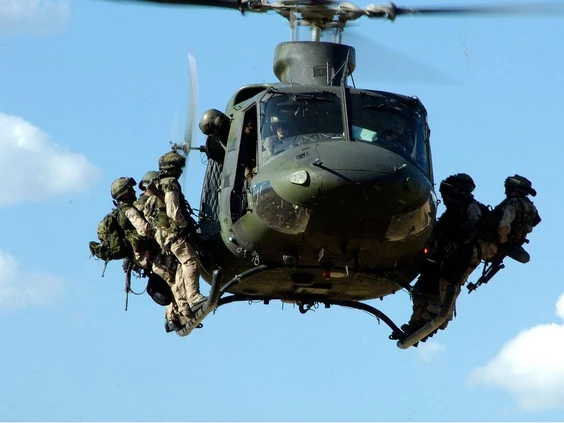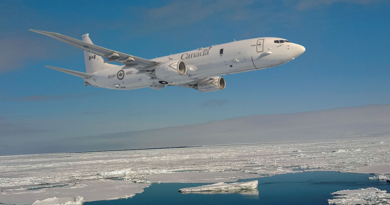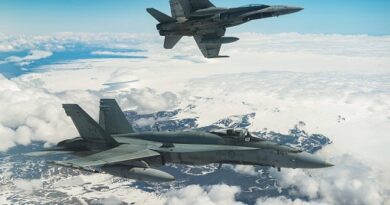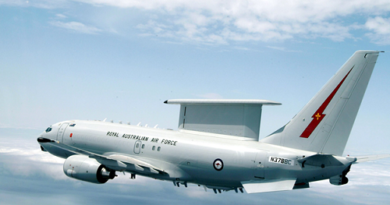Canada’s Special Forces Helicopters are Obsolete for the Role They are Tasked to Carry Out
Background
The article “Canadian Special Forces pilots warn they are being held back by inferior equipment and the obsolete Griffon helicopter”1 by defence correspondant David Pugliese in the Ottawa Citizen 5 July 2023 caught the attention of the RUSI(NS) Security Affairs Committee. The committee noted this matter should be addressed. What was startling in reading the article is the fact that serving Royal Canadian Air Force (RCAF) pilots flying the Griffon helicopter have openly warned that they are being held back by inferior equipment. But first, a bit of the background about the helicopter.
100 Bell CH-146 Griffon helicopters were ordered in 1992 in a sole source deal with Bell Textron Canada and delivered to the Canadian Armed Forces (CAF) between 1994 and 1998. They were intended to replace the Kiowa light observation helicopter and the Twin Huey utility helicopter. What should be noted is that the Griffon was not designed as a combat aircraft but a military utility version of the Bell 412. It carried no defensive or offensive armaments. 85 of the aircraft were assigned to Air Command (no RCAF) in the tactical helicopter role and the remaining 15 to base flights for local search and rescue operations.
The original intent was to retire the CH-146 in 2021. However, on 30 January 2019 the Department of National Defence decided to extend the life of the aircraft through 2031 with an upgrade in engines and avionics to the tune of $800 million. The first modernized helicopter is expected to be delivered in 2024 and the remaining aircraft will be upgraded by 2028 according to the CAF. Even with the planned upgrades, the CH-146 is considered obsolete for special forces operating in today’s threat environment.
From a flying perspective, the Griffon is finicky to fly. It is easy to overtorque whereas the US Blackhawk, for example, is hard to overtorque. Additionally, the Griffon is risky operating at higher altitudes and in hot temperatures. In other words, it is not a helicopter ideally suited for the role assigned to 427 Special Operations Aviation Squadron.
In a perfect world, the RCAF would have purpose-built aircraft with plethora of advanced communications, state of the art navigation and defensive suites. It is interesting to note that lessons learned from previous operations led to the M134D minigun being added for defensive support for some missions, e.g., escort of CH-147 Chinook helicopters in Mali.
The Ottawa Citizen Article
The committee has taken the liberty of quoting from David Pugliese’s article to give readers a flavour of what is happening inside 427 Squadron.
“The grim assessment is contained in a series of reports produced last year for the senior leadership of the Canadian Special Operations Forces Command (CANSOFCOM) and obtained by this newspaper through the Access to Information law.”
“The reports examined the state of the 427 Special Operations Aviation Squadron at Petawawa and looked at both positive and problem areas of the unit.”
“Royal Canadian Air Force personnel from the squadron said they enjoyed their jobs but felt stifled by military bureaucracy, double standards and inferior equipment such as the CH-146 Griffon helicopter.”
“ “The longer we keep the Griffon, the sooner it won’t be needed,” one report dated August 10, 2022, noted. “We are simply held back by the Wing regarding what we want to do (and) more particularly, what we want to do alongside CANSOFCOM.” ”
“It noted the squadron is being limited by poor equipment. Some members interviewed for the reports stated that while on overseas missions they could not get the equipment they needed such as bullet-proof plates used for their personal protection, gloves, flying jackets and additional protective gear.”
“ “We are pushed to breaking points in pursuit of world-class effects using obsolete tools,” the August 2022 report noted. “We need new tools, or a means to amend the ones we have with less bureaucracy.” ”
RUSINS) Security Affairs Committee Comments
It is not the committee’s intent to delve into issues which are totally within the purview of the Canadian Special Operations Command (CANSOFCOM) and the RCAF, however, the defence and security of Canada is of prime concern to us. For that reason, we wanted to bring this glaring lack of operational capability to the attention of readers.
Our aviation experts say the most obvious solution would be to look at the way other Tier 1 units2 in NATO are supported. Information is available online about two of the best Special Forces aviation units in NATO: the US Army 160th Special Operations Aviation Regiment, and the Royal Air Force 658 Squadron which is dedicated to support of the Special Air Service and Royal Marines.
The committee is not advocating removal of the CH-146 Griffon from service, especially after the upgrades have come into effect. We are, however, advocating for a state-of-the-art helicopter for use by 427 Special Operations Aviation Squadron. We believe CANSOFCOM will have carried out a requirements analysis for a Griffon replacement therefore we leave that task to the experts.
The Griffon was purchased as a utility helicopter for use in Canada and is most suitable for domestic operations: training Canadian Army soldiers in rappelling, air assault, evacuation and transport, and other like missions. The other Griffon squadrons do this well and on a regular basis.
There is a need for 427 Squadron to be equipped with task-designed equipment in the same way CANSOFCOM Joint Task Force 2 has task-specific ground and maritime assets. Hopefully, these comments will come to the wider attention and positive action is taken quickly to rectify the situation.
Pictured are troops from the Canadian Special Operations Regiment preparing to rappel from a CH-146 Griffon helicopter from 427 Special Operations Aviation Squadron. The Griffon is the primary helicopter used in this role by the Royal Canadian Air Force. Photo credit: Sergeant Donald Clark, Canadian Armed Forces.
2. Tier 1 units, at times referred to as Special Mission Units (SMU), are a classification of special operations Forces known for their involvement in high-profile military operations. (https://special-ops.org/tier-1-special-mission-unit/)




